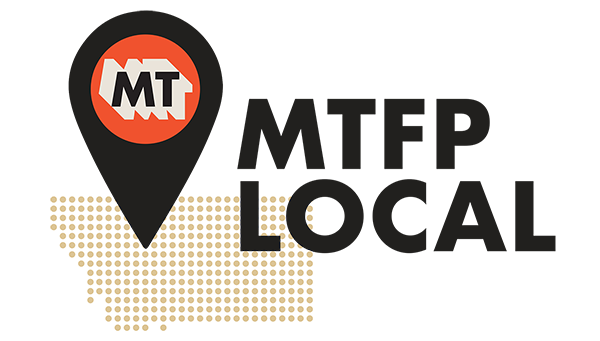Mon - Fri 8:00 - 6:30
Mon - Fri 8:00 - 6:30

Helena Public Schools will consider an array of options, including the closing of schools, to help cope with the maintenance backlog throughout the district, the schools’ superintendent said.
The district has about $8.3 budgeted to spend on its buildings during the current school year, while the maintenance updates are expected to cost close to $90 million, Superintendent Rex Weltz recently told Montana Free Press.
Because the district cannot afford to update every building’s needs at the same time, it hired SMA Architecture and Design to help develop a plan that will frame the options the district can take to approach the budget shortfall, including the possible closure of some buildings.
Weltz, who took on the position in 2021, explained that the plan will help the district better strategize how it moves forward.
“The [school] board realized that rather than being reactive to repairs and needs through a facility, we really want a roadmap forward,” Weltz said. “We want to be able to forecast what we’re going to do, what we need to do with our buildings across the district and that helps us plan and communicate to our community, to our taxpayers. We’re being strategic in our efforts and not reactive.”
There are 11 elementary schools, two middle schools and three high schools within the district, not including buildings such as the Lincoln Center that houses the district’s administration. Some buildings are over 100 years old. One of the oldest buildings, Hawthorne Elementary, was built in 1920.
Friends of Neighborhood Schools, a recently formed nonprofit group of Helena elementary school parents, said in a press release this week that closing schools would be a short-sighted approach. It says the draft of the plan emphasizes closing neighborhood schools, namely Hawthorne and Broadwater elementary schools.
“Closing any of these neighborhood schools saves very little money for the district and would cause enormous disruption for students, families and teachers,” the release said.
Angela DeWolf King and Hanna Warhank, both parents of children who attend Hawthorne Elementary and part of Friends of Neighborhood Schools, spoke with MTFP about the group and their concerns. Any plan that closes a school, the parents said, doesn’t consider the best interests of students.
“This group started out of wanting to have a group that was organized to advocate for why we think keeping those neighborhood schools and keeping those school communities for our kids,” DeWolf King told MTFP.
“The Helena community simply can’t afford to pay to make up the deficit shortfall and also pay for bonds to build new facilities when we have workable facilities,” Warhank said. “I think the Helena community has already spoken that they want to maintain the existing facilities and so that would be our hope.”
According to Weltz, the plan, which isn’t finalized, will consist of different options for each school level, elementary, middle and high school.
In a copy of the draft master facilities plan provided to MTFP by Friends of Neighborhood Schools, there are five different scenarios that the district could take, each presenting different phases that show school buildings being either leased, renovated, repurposed or replaced.
School officials noted that the draft won’t be official until SMA presents the plan to the board next month.
The facility plan will be presented first to the school district facility committee in early February, and then to the school board on Tuesday, Feb. 13, according to the district communication officer Karen Ogden.

“The master facilities plan really takes a holistic look at every building,” Ogden said during the interview with the superintendent. “So it looks at what kind of exterior repairs does it need? What kind of electrical plumbing, electrical, and then how much would that cost to make those improvements? And then that all goes into the recommendations that will come out of the plan.”
Last year, voters approved a $3 million levy, requested by the school board, for the building reserve fund, with half of the funds allocated to K-8 buildings and the other half reserved for the high schools.
According to the superintendent, the school buildings require updated HVAC systems, electrical updates, ADA accessibility for older buildings, and other maintenance updates throughout all the school buildings.
The budget shortfalls are due, at least in part, to lower student enrollment since East Helena’s recent opening of its new high school, which drew students from Helena High, Weltz said.
The district has already taken another avenue to save funds and add revenue. School trustees earlier this month approved leasing the building that previously housed the Ray Bjork Learning Center, which was closed last March, to St. Peters Health for the next 20 years. The lease will generate around $225,000 annually for the district, according to Weltz. St. Peters plans to renovate the space into a daycare for the hospital.
In a letter published on the district website last month, Weltz wrote that Montana schools are not benefiting from higher state property taxes that resulted from a recent increase in statewide property values.
“So today I write to set the record straight: Montana school districts will not receive additional funding as a result of increased property tax collections at the state level. Nor will our schools get a boost from any other tax windfall, such as coal or cannabis revenue,” Weltz wrote.

In-depth, independent reporting on the stories impacting your community from reporters who know your town.
The post Helena schools consider array of cuts, including closures, to offset budget shortfall appeared first on Montana Free Press.
'It's ridiculous': Upstate customers share concern...
Alec Baldwin had ‘no control of his own emotions...